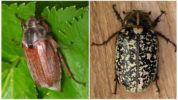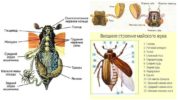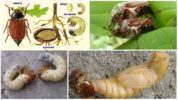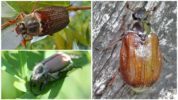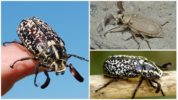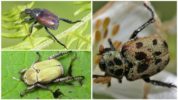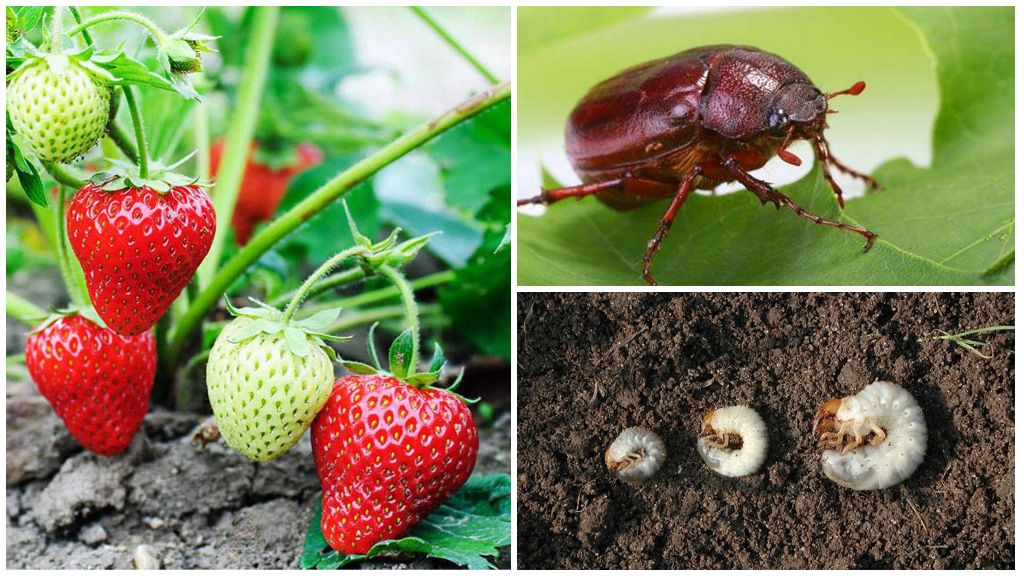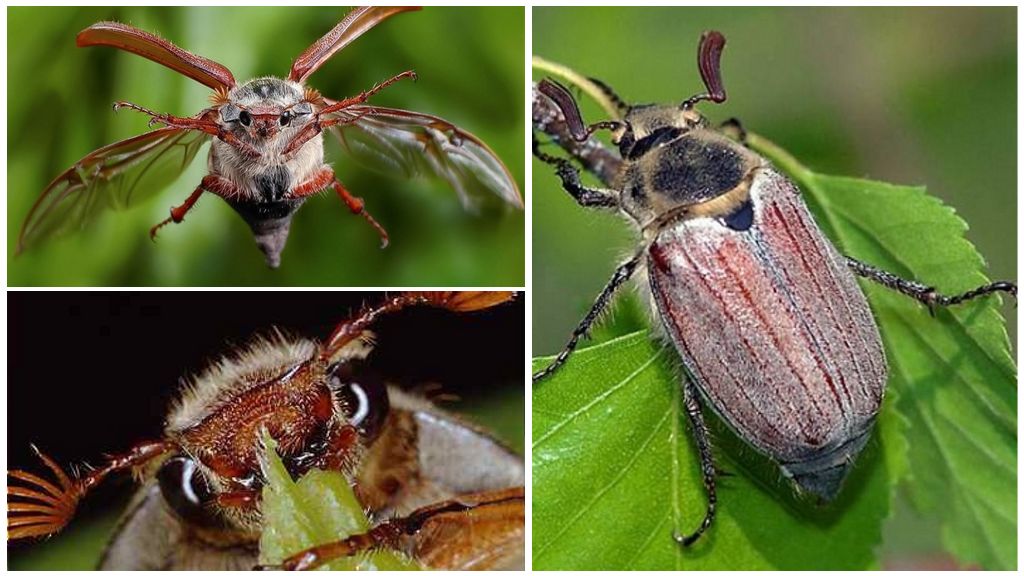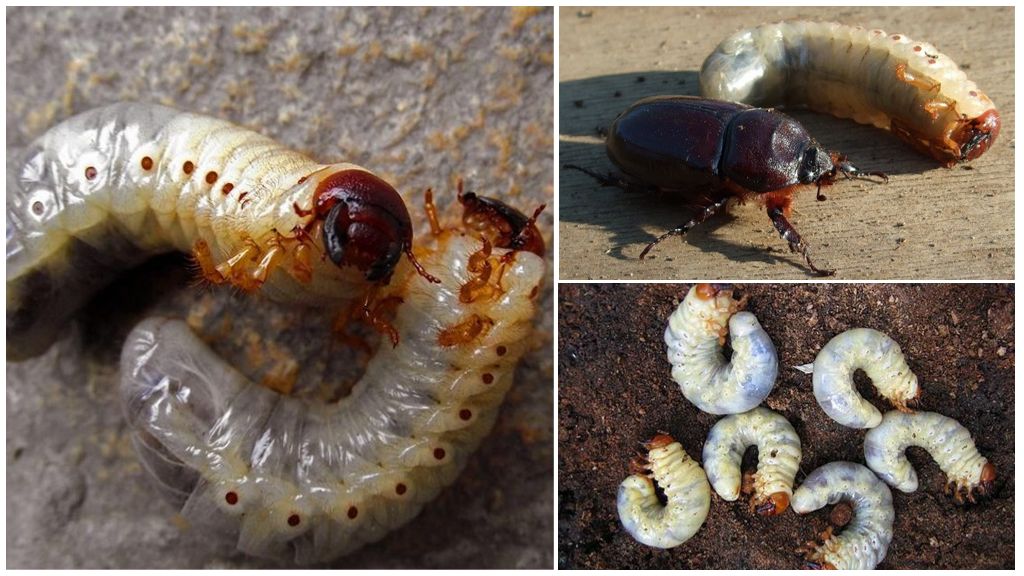- What does the may bug look like?
- Genus Melolontha
- Genus Polyphylla
- External structure
- Sensory organs
- Internal structure
- Lifestyle & Development
- Types of May beetles of the genus Melolontha
- West May
- Eastern May
- Transcaucasian May
- Types of Polyphylla
- White horsetail
- Marble Crunch
- Caucasian marble
- Flower stalks
- Large flower stalk
- Small flower stalk
- Golden hoplia
- Natural enemies
- Chafer
- The structure of the beetle
- May bug reproduction cycle
- May beetles of the genus Melolontha
- Types of Polyphylla
- Flower stalks
Lamellar May beetle belongs to the subfamily of beetles (Melolonthinae). All members of the subfamily are pests for plantssince their larvae eat live roots. In all species, the summer time begins in the last month of spring (November in the southern hemisphere), therefore, any beetle from the subfamily of Khrushchev can be called May.
On a note!
There are 10 tribes in the subfamily, but only 2 of them are interesting for gardeners and gardeners in the territory of the former USSR: flower stalks (Hopliini) and May beetles (Melolontha).
What does the may bug look like?
May bugs are insects that are most consistent with the generally accepted notion of grunts. The tribe includes 20 genera. All May beetles are similar to each other, differing only in small details of the structure of the body and color.
Sometimes, due to the color of the cartilage belonging to the tribe of May beetles, it is difficult to recognize. Especially this refers to the genus of marble crunch with the Latin name Polyphylla. The photo and description of the May beetle usually give an idea of another genus - Melolontha.
Genus Melolontha
Representatives of the genus have large body sizes, which can reach 32 mm. The body of the beetle is convex, oblong-oval. Coloring is black or red-brown. Elytra usually yellow-brown or red-brown. There may be a faint greenish tint on the head. The body is covered with fine punctures and fine light bristles. Legs are short or moderate in length.
Antenna with 10 segments. 3rd segment elongated. The male at the end of the antennae has a “club” of 7 plates.
Elytra ribbed, elongated-oval. The chest is covered with thick and long yellow bristles. The posterior end of the abdomen is triangular in shape, large, tilted to the ground.
On a note!
You can distinguish a female beetle from a male at the rear end of the abdomen. In the male, the tip of the abdomen is pointed and longer than in the female. The abdomen itself in the male also sticks out from under the elytra more than in the female.
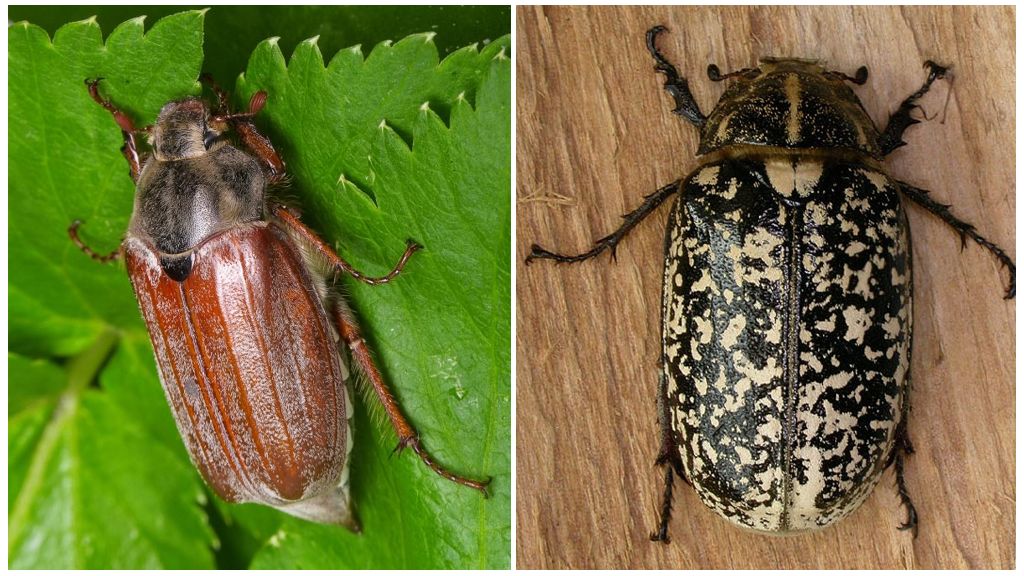
Genus Polyphylla
Crunches with a body size of 3-4 cm. The body of females is always more massive than that of males, and the legs are shorter. The body is massive, convex, long. Body color is black, black-red or black-brown.
The back of May beetles is covered with light scales, which sometimes completely hide the main color. Flakes can be grouped into spots or a specific pattern.
The eyes of marble gherkins are bulging, large. On the antennae of males, the mace consists of 7 plates, and of females, it consists of 5. Elytra without ribs, with rounded sides. The legs are thin and short.
External structure
Khrushchev is no different from other representatives of beetles. Therefore, the structure of May beetles is similar to other insects from this order:
- the head on which the eyes, antennae and oral apparatus are located;
- thoracic region of 3 segments; a pair of legs attached to each segment;
- abdomen of 8 segments.
The thoracic part bears all the functions of moving the insect. 3 pairs of legs are attached to it from below, 2 pairs of wings from above.
Interesting!
The hard elytra is actually a modified first pair of wings. The real pair of wings of the May beetle is quite small and hardly lifts the host into the air. The flight takes place with a low humming sound. Raised elytra do not add aerodynamicity to the May bug. Awkward flight, low speed. Therefore, myths about the accumulation by May bug of electricity in flight did not arise. Since the May beetle flies poorly, it rises into the air to find a pair for mating or fly to the nearest tasty plant.
Sensory organs
All external sensory organs of the May bug are located on the head and are well developed. If you look at a close-up photograph of the head of a beetle, you can see complex faceted eyes and antennae. The eyes of the May beetle are responsible for vision. Antennae are the organs of smell.
Internal structure
The internal life support systems of the May bug include:
- digestive system;
- respiratory system;
- excretory system;
- reproductive organs;
- primitive circulatory system;
- primitive nervous system.
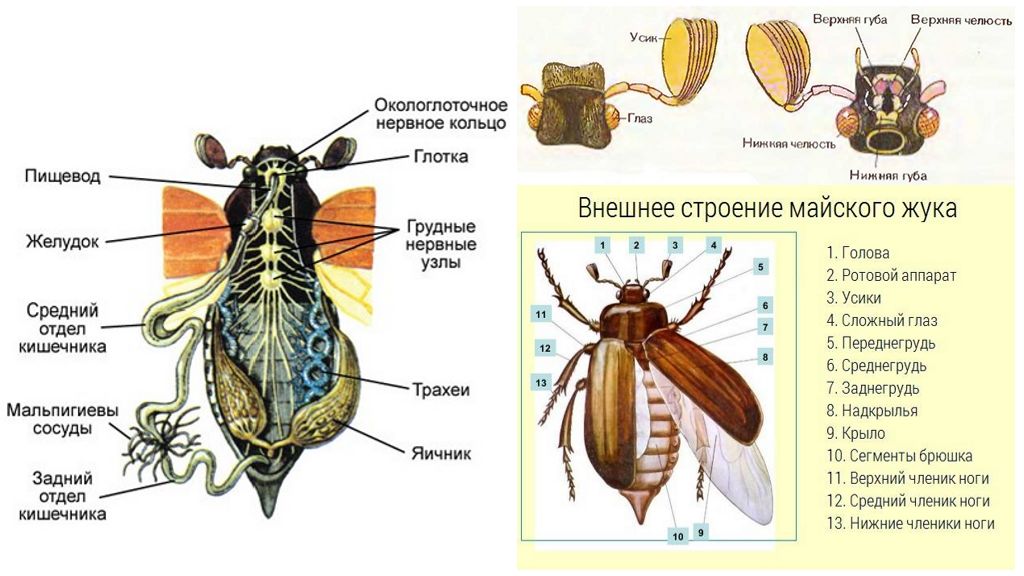
The circulatory system consists only of the dorsal vessel, passing along the central axis of the beetle and "suspended" to the upper part of the chitin skeleton. 3 primitive hearts are located in the abdomen of the insect.
The central nervous system includes:
- the brain, consisting of two nodes of the pharyngeal ganglion;
- periopharyngeal connections;
- abdominal neural chain.
The first two nodes are in the head, the rest in the body.
The digestive system consists of the anterior, middle and hindgut. In the first two sections, the insect absorbs food, the latter is responsible for excretion and water metabolism.
On a note!
The respiratory system consists of 18 tracheas, the spiracles of which extend to the lower parts of the chest and abdomen. A large number of spiracles provide the Maybug with good air exchange when it burrows into the ground or is in flight.
The female reproductive system includes:
- 2 ovaries;
- 2 egg ducts;
- 1 “external” egg line through which eggs enter the external environment;
- seed receiver;
- adnexal glands.
The male has:
- 2 testes;
- 2 vas deferens;
- vas deferens;
- copulative organ;
- adnexal glands.
Lifestyle & Development
May bugs emerge from the earth in late May (hence the name) - early June. The first thing an adult does when he comes into the world is looking for a mate. Insects mate in the early days of summer.
Khrushchev is an insect that has a full type of development. During its life, the May beetle goes through 4 stages of development:
- egg;
- larva;
- pupa;
- imago.
After fertilization, the female bug beetle buries itself in the ground and lays eggs there. The process of turning an egg into an adult takes 3-5 years.
Beetle eggs are oval and 2x2.5 mm in size. The female lays them at a depth of 20-30 cm. In just 3-4 times, she can lay up to 70 eggs.
The development of the May beetle takes place completely underground. After 1-1.5 months, out of the laid eggs larvaethat bury to a depth of 50 cm. What may bugs eatdepends on the stage of development. Larvae feed on plant roots. In food, they are unintelligible and eat everything they can find. During the development of young growth passes through 4 phases. After the last one, the larva burrows deeper and pupates.
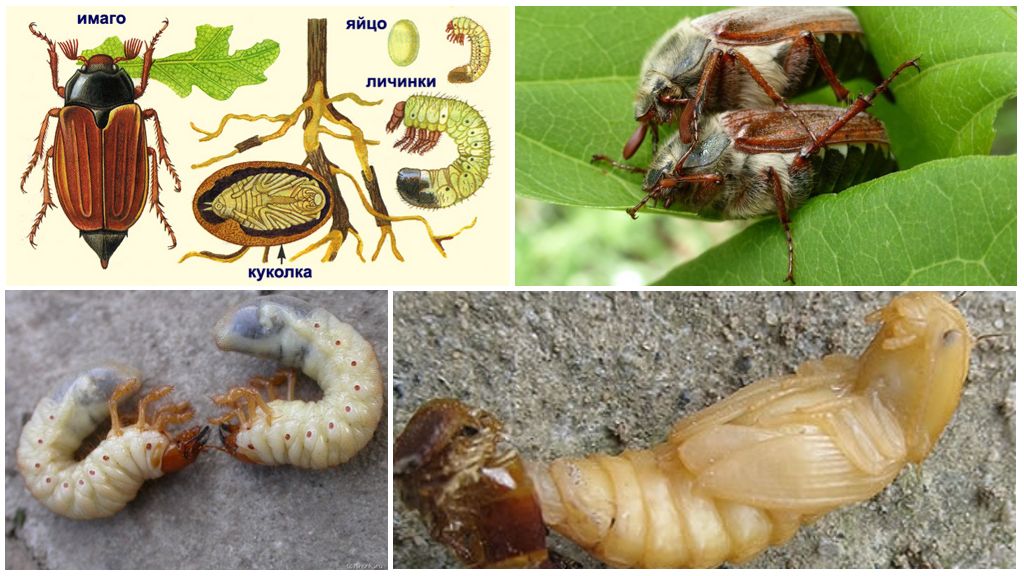
The chafer of the May beetle finishes its transformation into a “cradle” at a depth of 40-50 cm. In shape, it looks like an adult, but has a head bent under the chest and short wings. The color of the pupa is yellow-white. The pupal phase lasts 0.5-1 months.
Interesting!
Pupation begins in mid-late summer and the chafer beetle emerges from the pupa in the fall. It will come to the surface only in spring. Because of this, it is difficult to say how long the May bug lives. If you take into account the full life cycle, the life time can be up to 5.5 years. The life time of an imago is no more than a year, taking into account "underground time". On the surface of the same raspberries live no more than 3 months.
Types of May beetles of the genus Melolontha
In Russia, representatives of this genus are inhabited by:
- Western May Khrushchev;
- Eastern May Khrushchev;
- Transcaucasian May Khrushchev.
Their lifestyle is similar, but their appearance is slightly different.
West May
The insect bears 2 names: the western May beetle and the western May beetle. The length of the body is 2.3-3.2 cm. It differs from other grains by high variability of color. The most common variant: a dark pronotum and yellow-brown elytra, abundantly overgrown with light bristles. The beetle gives the impression of sprinkled with flour.
The insect is early: in the southern regions, the beginning of summer falls in mid-April. Of garden plants, plum is preferred.
Habitat: most of Europe. In the north, May beetles are found up to the suburbs. South is limited to the Black Sea.
Eastern May
This insect is also called the eastern May beetle or wild chestnut. Eastern and western Khrushchev are very similar, but differ in coloring elements and some other signs:
- smaller sizes (2.0-2.9 cm);
- medium-sized eyes;
- the antennae of the male consists of 7 segments, the female of 6, the plates of the male are 2 times larger than the female;
- the posterior end of the abdomen is very sheer.
The color of this species is very variable.
Range: all of Eurasia. The northern border runs along Arkhangelsk and Yakutia. South - in Odessa, Zaporozhye, Uralsk and Altai up to Shanghai.
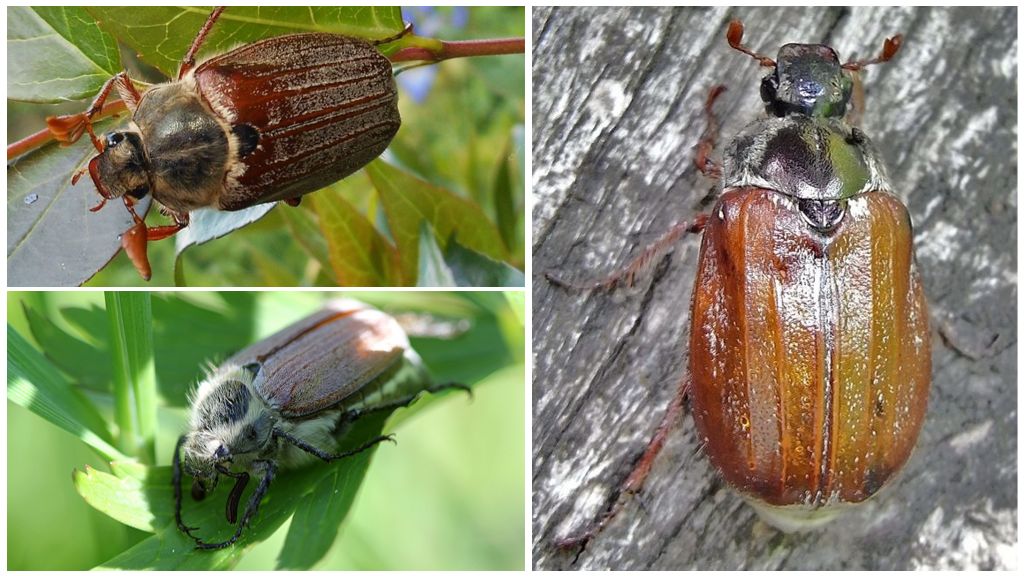
Transcaucasian May
Length 2-3 cm. The color of the abdomen, head and pronotum is black. Elytra yellow-brown, shiny. The larva is no different from the Western and Eastern Khrushchev. Range: Southern Europe and the Caucasus.
Types of Polyphylla
Of the representatives of this genus, 3 species inhabit the territory of Russia:
- white;
- marble;
- Caucasian marble;
In this genus of May beetles, the main color is often hidden by scales that cover the body of the cartilage.
White horsetail
The size is 2.5-3.5 cm. It would be very similar to the Western May bug, if not for the white scales densely covering the body. The male completely hides the main brown background.
The species is Central Asian, actively penetrating the European part of Russia. It is already widespread in the Crimea in the region of Yevpatoriya. It lives in sandy soil.
Marble Crunch
Other names: motley Khrushchev or July Khrushchev. Adults come out in July, hence the middle name. The size of the May beetle is 2.5-4 cm. The color is dark brown. Elytra bright spots formed by bristles. This characteristic pattern gave the name to the insect. For life, he chooses sandy soils.
Range: almost all of Europe. In Russia, the northern border passes through the Kursk, Voronezh, Penza regions. South - along the coast of the Black and Azov seas up to Anapa.
Caucasian marble
Large beetle 3-3.8 cm long and 14-19 mm wide. Color black / brownish black. The back with a white pattern of scales. They live in dense soil. Hiding in the ground during the day, leading an active lifestyle at night.
Distributed in Central and Asia Minor, Greece and the Caucasus.

Flower stalks
Heat-loving May beetles that do not climb far north. In the CIS, their range extends across Belarus, Ukraine and the southern regions of Russia. There are varieties:
- large flower stalk (Hoplia philanthus);
- small peduncle (Hoplia parvula);
- golden hoplie (Hoplia aureola);
Like all beetle beetles, imagoes of flower stalks damage the aerial parts of plants. Larvae feed on live roots.
Large flower stalk
A medium-sized beetle of black or black-brown color. The color of the elytra varies from dark to reddish brown. The elytra can also be dark with a reddish-brown border. On the upper side of the body, the main color is partially covered by gray scales. 10-membered antennae black and brown. The body is slightly convex, oblong. Length 7-9 mm.
The range includes the territory of the entire European part of Eurasia. Years begin in May. Life expectancy of adults no more than 3 months. The total life cycle is 1 year. Females laying eggs die, and larvae leave for wintering.Beetles are active in the daytime.
Small flower stalk
A small green beetle up to 1 cm in size. In fact, the color of the small flower stalk is black, but the body is covered with matte or shiny scales of green, golden green, blue-green or brown.
On a note!
Sometimes green scales can mix with brown. Because of this feature, the beetle is easily confused with a young bronze or mint leaf beetle. But light hairs on the pronotum protruding between the scales help to distinguish insects. They give the impression of a white coating. The underside of the body is covered with silver-white scales.
The range includes Eastern Europe and reaches the middle reaches of the Urals. None in the Caucasus and Crimea.
Years from late May to September. Active during the day, feed on leaves. Larvae of this species have no eyes. Beetles are found in massive quantities on sandy soils. The life cycle is one year old. Larvae leave for wintering.

Golden hoplia
Small beetle 7-8 mm in size. The color is black, but the beetle is covered with yellowish-green scales with a spotted pattern. The spots are black and brown. Females are larger than males. They fly badly. The maximum distance is 200 m. Years begin from the end of May and end in August. The bulk of beetles comes to light in June - July. The habitat is meadows. It settles in sandy and sandy loamy soils. The range of golden hoplis is Eastern Siberia.
The remaining hoplies live outside the CIS and are not of particular interest.
Natural enemies
Due to the underground way of life, the real enemies of the khrushch are few. These are moles and shrews. Only they feed on May beetles, including their larvae in their usual menu.
The remaining “eaters” of gourmet are ineffective. Of the poultry, only hens willingly eat larvae, but they need help in obtaining food from the ground.
Interesting!
Hens willingly participate in the process of digging a garden and a vegetable garden.
Other poultry belongs to the May beetles and their larvae without enthusiasm. For ducks and fish, May beetles are an accidental prey that has fallen into the water.
Bats, too, do not make a big contribution to the regulation of the number of kites. Since May beetles breed immediately after reaching the surface, only latecomers to the event get the share of bats. Only large species that are threatened with extinction are caught. Numerous small mice are not able to catch such a huge insect compared to them. Match the benefits and harms of the beetle quite difficult. Insects are part of the food chain and malicious pests of crops.
